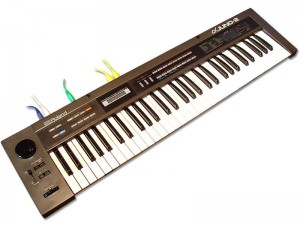Using the Akai MPC 500 I noticed that the downfall of the “baby-MPC” are :
- the pads are a little hard to play
- the volume of the machine is low compared to the big bros.
- the filter does not always behave correctly
The first problem , which may seem quite hard to face, for me became not so limiting.
The air-space between the internal of the pad and the sensor is quite far, more than 1,5 mm, so you have to hit hard to make the rubber to touch the sensor.
When you use the machine intensively the rubber of the pad bank tend to behave in a more soft way because of the use , so the pads beaten more often get more “easy to manage” with velocity on and react better to the thump of the fingers.
The second point is the volume.
Reading the manual you can see that the 500 has 12dB less of output volume than the 1000 and 2500, this is quite a lot of volume!
The only way to get it play louder is to use an external preamp or pump up the gain in your mixer.
The problem is caused by the fact that at akai have studied the amp section for a battery powered use, so there are no special settings to get better results.
The one thing to avoid is to pump up the volume of the pads, and get the headroom under -6dB.
Setting the sample volume to 100 will lend for sure to a highly annoing overdive of high frequencies and the total lost of fidelity of the sample played.
My advice is to get the master volume knob to max, headroom to -6dB, and sample volume between 70/90.
In this way you will have a godd result and no overdriven frequencies, then using the gain in your mixer you will get the right volume to fit the 500 in the mix with the other instruments .
The third and quite absurd downfall of the 500 is the strange behaviour of the filters.
I noticed that the LP filter (used as preset in every program) is the main reason that leads to lower volume and distorted sounds.
Sampling a closed hat , the sample sounded good in the “preview” (pushing “play”) while had a different “fidelity and a total loss of high frequencies and a lot of distortion in the program.
Switching the filter from LP(lowpass) to “–” (that means bypass) the sample sounded good again as in the preview.
So the filter was the cause of that awful sound!
I don’t mean that every sample sounds bad with the filter on , but I noticed that quite all the samples gained a little volume and a cleaner definition bypassing the filter, and however some samples sounds very bad with the LP filter on, especially the ones that are rich of high frequencies as hats, cymbals, etc..

